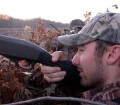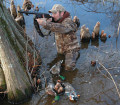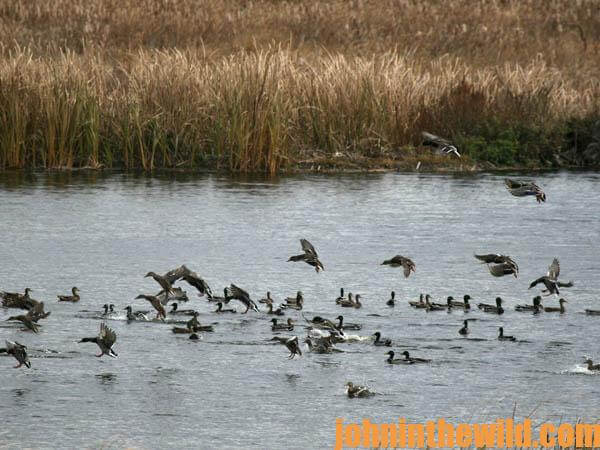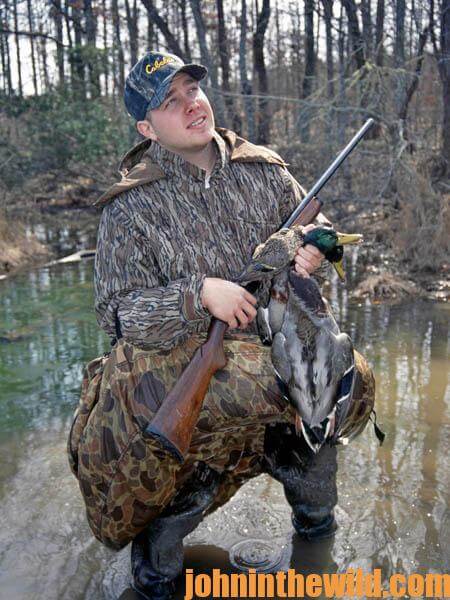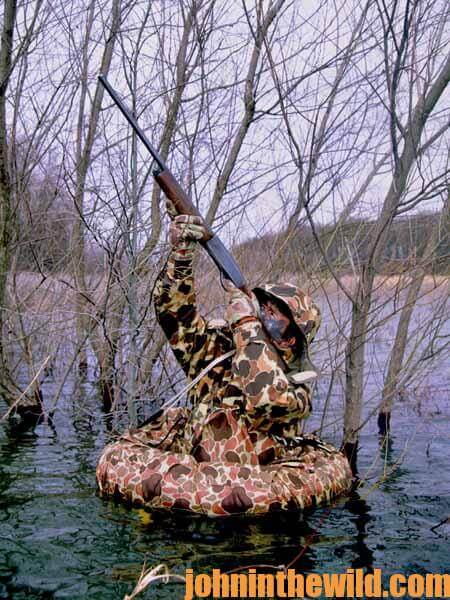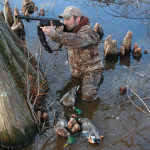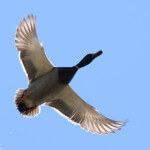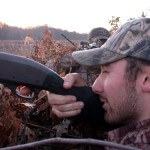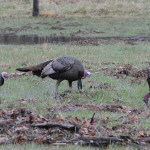John’s Note: I really enjoy classic waterfowling. I like hunting from a blind, using 50 or more decoys, having a retriever pick-up the ducks and sharing the experience with a good hunting buddy. However, classic waterfowling requires too much equipment and doesn’t allow me as much mobility as I have when surprising ducks in flooded timber. Open-water hunting for waterfowl also requires that you live near or travel to big water. Throughout most of the South where I live, you’ll find little potholes and streams, flooded-timber areas and woods ponds where ducks will feed and hold, especially during a cold winter. You can hunt anywhere where you find enough water to float ducks and enough food to feed them. I enjoy hunting ducks. When I make a long stalk to take birds as they come off the water, I feel more satisfied than I do when I put out a decoy spread and blow a duck call, until some feathered phantom gets curious enough to see what’s happening. If you want to enjoy waterfowling without all the hassles, try these surprise tactics to take webfoots.
I’ve enjoyed sneaking-up on ducks for most of my life, but I always seem to shoot one duck that falls in water deeper than the top of my waders.
I remember very well the first pair of ducks that taught me what to do about this problem. Just before our first Christmas, I promised my wife I’d take a mess of ducks for our Christmas dinner. I had pinpointed where the ducks in our area fed and roosted. With bad, cold weather on the way, I knew I’d find the flooded-timber region I hunted full of ducks. I went into the area before daylight. For some reason, the place I’d planned to hunt didn’t hold any ducks. I continued to wade down the edge of the slough, until I heard feeding ducks in the distance. Stalking slowly and carefully, I moved to within striking distance of a big flock of mallards and wood ducks feeding on floating acorns. When the ducks came up from the water, I quickly bagged two birds. A few minutes after I waded in to retrieve them, seven birds came into the open water in the flooded timber, cupped their wings and prepared to light. I picked out two green heads. As they tried to shift gears from descending to ascending, I introduced them to No. 4 shot. Now I had plenty of ducks on the water for dinner.
I picked-up the first two ducks easily. But the second pair of webfoots had fallen in the middle of the open water, an old oxbow off the main river. As I waded toward the other two ducks, the water became deeper until only inches from the top of my waders. Finally I realized I’d have to back out of the water without reaching those two ducks. I faced a moral dilemma, because in the back of my mind I heard my dad’s voice from the past saying, “Son, we don’t take any game we don’t retrieve. If you shoot it, you go get it. If you’re not willing to go get it, then don’t shoot it.” I’d often watched my dad search for an hour to find one squirrel that had fallen in a briar patch. He taught me to live by the same code. As I looked at those two ducks on the water and felt the extreme coldness of the weather and the water, I reasoned that I had had more than enough of an excuse to leave those two ducks. Only an absolute nut would go into that cold water to retrieve those ducks. But I never respected a man and his principles more than I did my dad.
After 15 minutes of trying to talk myself into leaving those ducks, my conscience won out. I put all my clothes in a neat little pile on the bank and waded as fast as I could to the deep water. When I stood armpit-deep, I picked up the two mallards and swam back to shore. Shivering in the cold and in the throes of the flu, I decided I’d find a better way to get those ducks that fell in water too deep for wading. After that trip, I added a rolled-up belly boat and a small can of compressed air to the equipment I carried in my backpack.
Now when I go duck hunting, I have two options. I can stalk in close to the ducks without the belly boat, and use the belly boat when I need to retrieve the ducks, or I can glide in the belly boat as I stalk. I often sit in the boat and hide from ducks, as I move close to them. I consider the belly boat a real advantage when I stalk ducks in water over thigh-deep. By holding the belly boat on both sides, I still can move close to the ducks. If I do step in a pothole or a beaver run, I don’t even come close to getting wet or filling my waders with water. Too, I don’t have to stay in shallow-water sites to hunt ducks. If I find ducks feeding in deep water after I shoot and pick up my quarry, I can sit in deep water in the flooded timber and wait for the ducks to return. But when you shoot from a belly boat, don’t try to shoot the ducks directly above you, especially if you don’t have your feet on the bottom. You can dump yourself over if you shoot high-velocity shells, lean back and take a shot off-balance. I know. I’ve been there, done that and had the soggy clothes to prove it. Belly-boat hunting ducks opens-up many opportunities to take waterfowl that you won’t encounter when stalk hunting. True, a rolled-up belly boat and a small canister of compressed air will add more weight to your backpack. But the advantages of access to deep water far outweigh the disadvantages of the added weight.
To learn more about preparing ducks and other wild game besides seafood and fish from our family’s recipes from the past 45+ years, get John and Denise Phillips’ new eBook “The Best Wild Game & Seafood Cookbook Ever: 350 Southern Recipes for Deer, Turkey, Fish, Seafood, Small Game and Birds.” Click here to get this book.
About the Author
John Phillips, winner of the 2012 Homer Circle Fishing Award for outstanding fishing writer by the American Sportfishing Association (AMA) and the Professional Outdoor Media Association (POMA), the 2008 Crossbow Communicator of the year and the 2007 Legendary Communicator chosen for induction into the National Fresh Water Hall of Fame, is a freelance writer (over 6,000 magazine articles for about 100 magazines and several thousand newspaper columns published), magazine editor, photographer for print media as well as industry catalogues (over 25,000 photos published), lecturer, outdoor consultant, marketing consultant, book author and daily internet content provider with an overview of the outdoors. Click here for more information and a list of all the books available from John E. Phillips.

